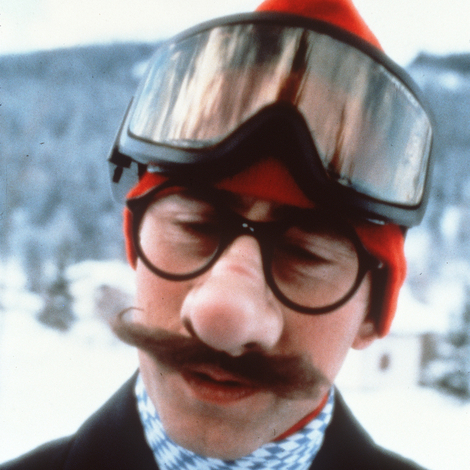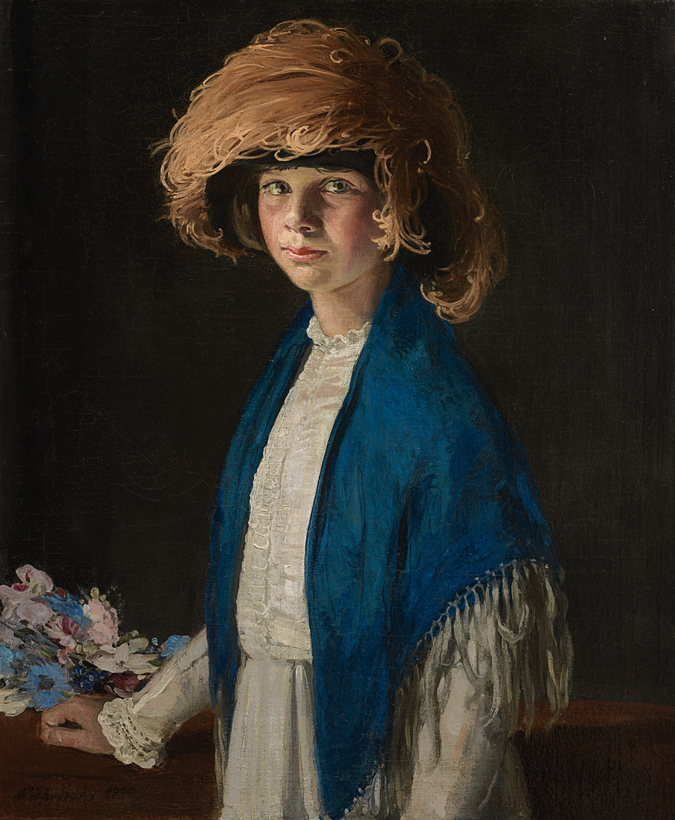William Nicholson had a terrible Great War. At 53, he was too old to be conscripted. But he lost his wife, Mabel, to the influenza pandemic in July 1918. And three months later, his son Tony died in action, only 37 days before the fighting ended. So it’s no surprise that Nicholson’s 1918 painting Armistice Night, invoking one of the wildest celebrations in British history, is rendered in deep blacks and a sickly sepia.
Successful and well connected in his lifetime—Nicholson was born in 1872, knighted in 1936, and died in 1949—the man has receded into a shadowy hinterland of British art: the era positioned between late Victorianism, with its stags at bay and Arthurian heraldry, and the modernism that began to take hold after the end of the First World War.
He was further eclipsed by his son Ben, whose meditative abstractions dominated Britain’s avant-garde in the 1940s and 1950s, though one suspects that Nicholson père, being a family man, wouldn’t have minded that.

The exhibition “William Nicholson,” opening today, is part of a move to restore the artist’s status. The show is presented by Pallant House Gallery, in Chichester, West Sussex, the tiny south-coast town that has become the unlikely mecca for 20th-century British art.

From this distance, Nicholson looks like a key bit of connective tissue between the polished, socially accomplished style of John Singer Sargent and the quiet, observational concerns of Spencer Gore. Like Sargent, Nicholson made a lot of money painting portraits of luminaries such as James Barrie and W. E. Henley, as well as a profusion of generals and university chancellors. Yet his early posters—made with his brother-in-law James Pryde and signed “Beggarstaffs”—and his woodcuts for publishers now look to be Nicholson’s most radical work, distinguished by flat color planes and line drawings. He only began painting in earnest around the turn of the century. The glowing still-life paintings for which he is perhaps most known show his facility for naturalism’s devoted rendering of the surface of things.
Still, there’s an interestingly diaristic element to Nicholson’s work, especially after he had made his money: he was as likely to produce a painting of a local washerwoman as he was the viceroy of India’s turbaned orderly or a pair of gardening boots. His minimalist landscapes, mostly of the South Downs, acted as a record of his hikes around his home in Sussex, and later in Sutton Veny, in Wiltshire.

Friends and family were always important. Nicholson’s daughter Nancy, for example, married the poet Robert “Goodbye to All That” Graves, whom he swiftly enlisted to edit his verse-and-fable annual, The Owl. (Only three editions were ever produced.) That short-lived publication, with its frontispiece lifted from an 18th-century Thomas Toft ceramic design and its determinedly non-ideological attempt to turn away from the brutality of the war, is normally seen as evidence of Nicholson’s innate conservatism. In the charged, fevered arena of postwar art criticism, this no doubt went against him. These days, however, Nicholson offers a reassuring sense of solidity. In our current hyper-chaotic world, that means a lot.
“William Nicholson” is on at Pallant House Gallery, in Chichester, until May 10
Andrew Pulver is the associate film editor at The Guardian

